#heath groundsel
Video
n394_w1150 by Biodiversity Heritage Library
Via Flickr:
Icones florae Germanicae et Helveticae, simul Pedemontanae, Tirolensis, Istriacae, Dalmaticae, Austriacae, Hungaricae, Transylvanicae, Moravicae, Borussicae, Holsaticae, Belgicae, Hollandicae, ergo Mediae Europae. Lipsiae,F. Hofmeister [etc.]1834-1912. [v. 1, 1850] biodiversitylibrary.org/page/6035936
#Europe#Plants#New York Botanical Garden#LuEsther T. Mertz Library#dc:identifier=https://biodiversitylibrary.org/page/6035936#Achillea pectinata#Artemisia Abrotanum#Artemisia pontica#Artemisia dracunculus#Senecio gallicus#Senecio sylvaticus#Senecio viscosus#sticky ragwort#sticky groundsel#Tarragon#estragon#roman wormwood#small absinthe#woodland ragwort#heath groundsel#mountain common groundsel#noble yarrow#Southernwood#lad's love#southern wormwood#wormwood#groundsel#ragwort#botanical illustration#scientific illustration
0 notes
Text
Flowers of the March of Maedhros (possibly part one, there are so many!)
flora, fauna, geography and environment of Arda
I love doing general flora and fauna posts but I can’t fit everything in them so I’m trying to make more specific ones as well! please please feel free to send categories to work on with locations! Or any environmental world building asks!
extensive environmental world building for himring plus more in the Himring tag
Himring was the fortress of Maedhros in the March of Maedhros, a cold realm in Northeastern Beleriand located slightly Southeast of Dorthonion and south of Lothlann and Ard Galen. It was a cold region with taiga forested hills and icy waters, including the sources of several rivers, namely Celon and Little Gelion. The March was located between the cold mountains on the Southern and Eastern borders of Dorthonion and the mountainous regions of the Gap and Thargelion on its own Eastern border.
The cold likely comes from a combination of its proximity to the Ered Engrin and Ered Gorgoroth, especially given the boreal forested region of Dorthonion, as well as altitude in some parts of it. I go into this more on other posts.
The flora of the March is hardy, resistant to the cold that is present throughout so much of the year. Most flowers and herbaceous plants are herbaceous perennials that bloom in the spring and summer each year, sustained by their root stock despite the cold winters.
The March contains several habitats; boreal forests/taiga, montane steppes and meadows, riverbanks and marshier areas. Towards Maglor’s Gap, rocky outcrops including many of limestone invite plants that thrive on calcareous soils. Lothlann and Ard-galen were montane or boreal meadows. While boreal forest in many places is divided into three zones (closed forest where trees cover more than forty percent of the ground and have a dense layer of grass, high boreal or alpine and Southern boreal where croppings of temperate decidious trees might be found) I think the March and also Dorthonion which has some similarities in climate and ecology, would see a combination of these ecosystems.
Canon species: no canon species are associated with Himring, the March, or indeed much of Fëanorian occupied Eastern Beleriand
I use what we can extrapolate as possibly indigenous based on descriptions of climate, looking at similar real world locations, etc. I am also always happy to write posts based on real world locations by suggestion! (I’ve done the Havens of Sirion based on Southwestern Australia for example, etc. I think Tol Himling would have a similar climate to Hokkaidō).
-Mountain and red clovers bloom on the hills and meadow steppes in the late spring and summer. Arctic dandelion grows in the meadows in the North towards Lothlann and Ard Galen as does Annual Gypsophila, cutleaf coneflower, arctic harebell (also grows on stream banks), broadleaf chives, cow parsnip, longstalk starwort, heath violet
-Mountain avens grow in rocky outcrops throughout the hills around Himring, usually in the summer. Moss campion also grows throughout the hills, above the tree line. Nodding campion, heath grounsel, snow saxifrage, baneberry (also stream banks)
-Great spur violet, fireweed (especially in clearings), snowdrop, wall lettuce, wild tulip and grow in the forested areas. Boreal forests often contain berries and the forested areas around the hills has many species including bog bilberry, black crowberry, cloudberry, and wild strawberry.
-Alongside the rivers grows wood or alpine sorrel alongside glacier buttercup, Lapland buttercup, Arctic butterbur, one flower fleabane (which also grows in forested belts and meadows), alpine rockcress, moor king, wood ruff, alpine butterwort, and arctic or prickly rose.
-Arctic and common meadow rue grows in the North and West of the March in boggier areas as does milky whitlow grass, a flowering plant.
-Common Groundsel grows throughout the region
World building notes:
-A number of these species have medicinal uses
-Others are used as fodder, in salads, garnishes and other dishes or in teas
-storing and preserving plants of various kinds is highly utilized in the March, more so than other elven realms. Both flora with medicinal and culinary uses are frequently preserved through drying, fermentation or other methods
34 notes
·
View notes
Photo
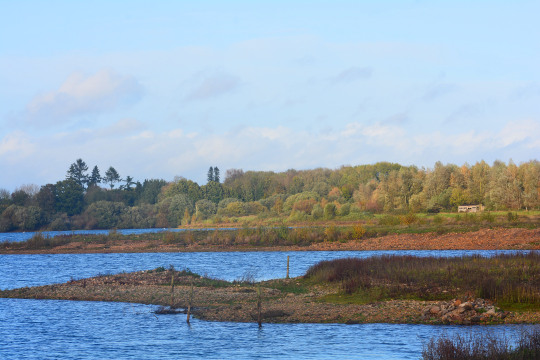

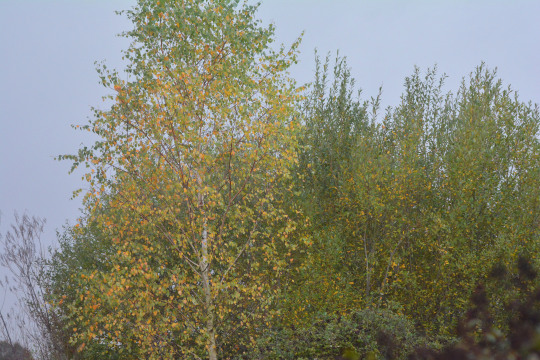
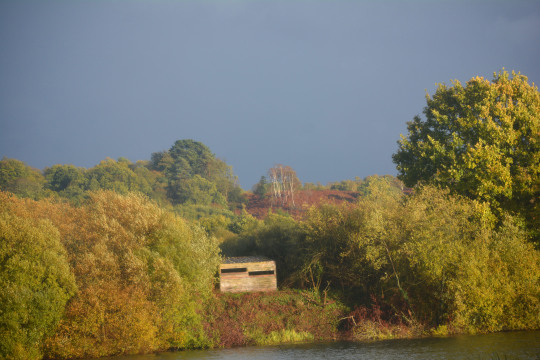

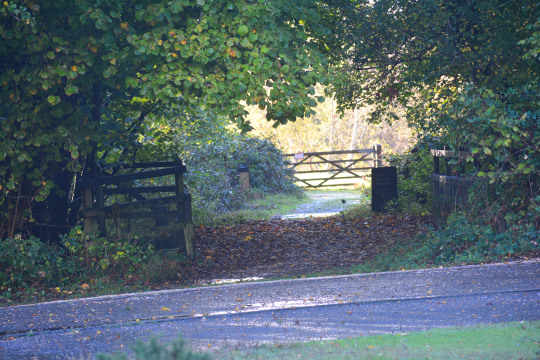

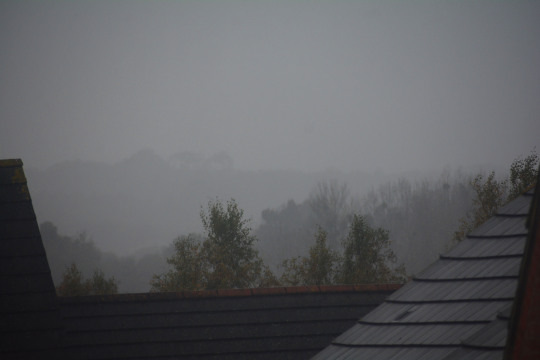

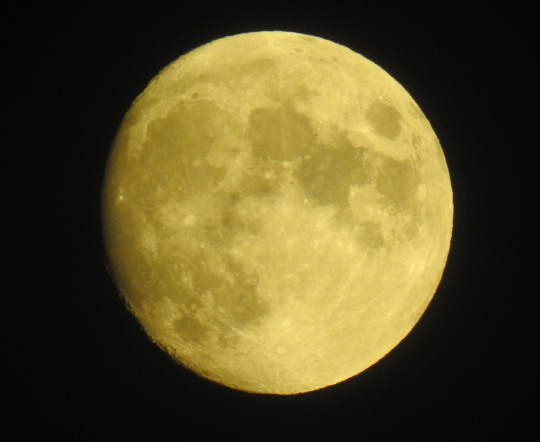
06/11/2022-Blashford Lakes and bits at home
I had a good afternoons birdwatching at Blashford. In terms of water birds it was nice to see many Great Crested Grebes especially on Ibsley Water. It was also good to see many Cormorants well this afternoon, as dusk started to approach on Ivy lake seen from Ivy South hide I liked seeing them gathered in the trees, with the call of two as they tustled echoing towards me it was pleasantly reminiscent of a seabird colony. It was sensual to see and hear one flapping on Ibsley Water from the tern hide earlier in the visit too. From Ivy North hide Wigeon’s bright colours glowed like perfectly painted cabinet ornaments in the murk of a rain shower.
Also over Ibsley Water a Red Kite soaring nicely showing its immense scale above a couple of flying Grey Herons stood out for the day. The best of the rest included a Jay in a golden birch, another Nuthatch seen well in the New Forest area lately after two weeks ago at Denny Wood with a lovely one feeding for ages at the woodland hide I took the seventh picture in this photoset of this and a great view of a Dunnock by the Ivy North.
I found some top bits of fungi between the entrance to the centre side of the reserve and Ivy North; a massive one, an entertainingly shaped one and a little brown button like one on the ground which I took the fifth picture in this photoset of a brittlegill I believe. It was great to take in much lichen here this afternoon in the field area, as well as ivy seen from the woodland hide, ragwort holding on in the field and remnants of another yellow flower a hawksbeard I believe. It was good to see rose hips and remnants of blackberries too.
Landscape wise it was so beautiful to witness the force of nature of the shower moving through at Ivy North. Dramatic when raging, then the green vegetation I had been attracted to during it got brighter and brighter as the sun emerged. With black clouds shuffling off into the distance towards Rockford Common which had its still quite purple heath revealed in the sun that followed as the fourth picture I took today in this photoset shows, a rainbow formed. Nearly a double the second didn’t quite make it, but the one that did come through was perhaps the brightest and clearest I’ve seen all year. A stunning colourful sight to behold I was transfixed by it. I tweeted photos I took of it on Dans_Pictures tonight. I don’t think I know of a place to watch and photograph rainbows better than Blashford Lakes, there always seems a potency about them here which I’ve enjoyed a few times over the years. In the midst of the shower where the autumnal colour was harder to discern, but for the weather and bare branches it didn’t feel too November like with how much green there is on the trees still. Wet autumn and green leaves in bright sunlight made great sights as the woods awoke from the shower the sun coming through and behind trees were enriching sights today. I enjoyed views of many different trees including pine, blue lakes and precious reedbeds, as well as smashing sky scenes here today. I took the first picture in this photoset of a view from the Tern hide, second of a sky scene, third of a colourful birch and sixth picture in this photoset of a view here today.
Such sky scenes enthused me at home today too and there was one heavy shower from there too. Seeing groundsel and captivating pink wet snapdragons in nice light outside the fence and House Sparrow and Starlings feeding as well as Collared Dove were good moments at home today too. I liked seeing the moon really well tonight again it looked beautiful. I took the eighth picture in this photoset during the shower with the mistletoe on distant trees looking clear and it was an atmospheric scene, ninth of a sky scene out the back with bits of autumnal colour in a view over the area that way starting to show and tenth and final picture in this photoset of the moon tonight. It was strange to see a Mute Swan beside the road and nice to see a few Carrion Crows on the way home from Blashford. A great and memorable weekend, I hope you all have a good week.
Wildlife Sightings Summary: Three of my favourite birds the Jay, Red Kite and Great Crested Grebe, Woodpigeon, Great Tit with one heard nicely in the woods too, Coal Tit, Chaffinch, Goldfinch, Nuthatch, Dunnock, Robin, Blackbird, a possible Redwing, Cormorant, Grey Heron, Black-headed Gull, Lesser Black-backed Gull, a nice selection of ducks Mallard, Tufted Duck, Wigeon and Gadwall, Mute Swan, Canada Goose, Greylag Goose I heard these from home today too, Coot, Moorhen, Grey Squirrel seen from the woodland hide and fly.
#fly#grey squirrel#moorhen#coot#canada goose#mute swan#gadwall#wigeon#tufted duck#mallard#lesser black-backed gull#gulls#ducks#black-headed gull#grey heron#cormorant#blackbird#robin#dunnock#nuthatch#goldfinch#chaffinch#coal tit#great tit#woodpigeon#great crested grebe#red kite#jay#photography#birdwatching
4 notes
·
View notes
Text
Richard Eitzel on the Challenges and Rewards of Hiking Kilimanjaro
Nestled within the core of East Africa, the majestic Mount Kilimanjaro serves as a welcoming beacon to thrill-seekers worldwide, much like Richard Eitzel, a seasoned hiker. Towering 19,341 feet (5,895 meters) above sea level, this dormant stratovolcano claims the title of not just Africa’s tallest peak, but also as one of the planet’s most approachable major summits. For extreme hikers such as Eitzel, the experience of trekking Kilimanjaro summons both exceptional challenges and unparalleled rewards, thus earning a spot on many adventurers’ bucket lists.
A Test of Physical and Mental Resilience
The hike to the summit of Kilimanjaro is not for the faint of heart. It’s a grueling test of physical fitness and mental toughness. The various routes up the mountain offer diverse challenges, but they all share a common denominator: altitude. As you ascend, the air becomes thinner, making each step feel like an uphill battle. Altitude sickness, characterized by symptoms such as nausea, dizziness, and shortness of breath, can strike even the fittest hikers. Proper acclimatization and a gradual ascent are key to mitigating these risks.
The Range of Route Choices
Kilimanjaro offers several routes, each with its own unique charm and level of difficulty. The Marangu Route, often dubbed the “Coca-Cola Route” due to its relative ease and availability of amenities, is popular among beginners. The Machame Route, known as the “Whiskey Route,” presents a more challenging climb through diverse landscapes. The Lemosho Route is celebrated for its breathtaking scenery, while the Rongai Route offers a more remote and less crowded experience. Choosing the right route is crucial to tailoring your Kilimanjaro adventure to your preferences and abilities.
A Journey Through Ecological Zones
One of the most remarkable aspects of hiking Kilimanjaro is the dramatic change in ecosystems as you ascend. The mountain’s unique geography allows you to traverse several ecological zones, each with its own distinct flora and fauna. You’ll start your journey in lush rainforests, where vibrant flora and the songs of exotic birds surround you. As you ascend, you’ll pass through heath and moorland, where strange, otherworldly plants like the giant groundsels and lobelias thrive. Finally, you’ll reach the alpine desert, a barren yet hauntingly beautiful landscape that leads to the summit.
The Challenging Summit Push
Richard Eitzel, like all extreme hikers, aspires to reach the pinnacle of the Kilimanjaro expedition, Uhuru Peak. This highest point on the mountain presents a formidable test of not just physical fortitude, but mental resilience. Hikers, like Eitzel, embark on the summit push in the early morning hours, navigating the frosty conditions and treacherous landscape, often under the meager illumination of headlamps. As dawn breaks, illuminating the African plains sprawling beneath in a mystical glow, the feelings of achievement and awe are unparalleled. Standing atop Uhuru Peak, hikers like Richard Eitzel experience a profound sense of being on top of the world, in every sense of the phrase.
The Importance of Guides and Porters
Kilimanjaro is not a mountain to be tackled alone. Experienced guides and porters are essential to a safe and successful ascent. These local experts possess an intimate knowledge of the mountain, its ever-changing conditions, and the best strategies for acclimatization. They also carry the bulk of your equipment and supplies, allowing you to focus on the hike itself. Interacting with your guide and porter team can be one of the most rewarding aspects of the journey, as you learn about their culture and way of life.
Wildlife Encounters
Kilimanjaro is not just about conquering a peak; it’s also about experiencing the unique wildlife that thrives on its slopes. While you won’t find the big game you’d encounter on a traditional safari, you may spot creatures like colobus monkeys, blue monkeys, and a variety of bird species. The mountain’s isolation and altitude have created a microcosm of life that is fascinating to observe as you make your way up.
The Rewards of Perseverance
The feat of conquering Kilimanjaro’s summit, as experienced by Richard Eitzel, is an accomplishment of immense magnitude, a testament to human resilience both physically and mentally. This pinnacle moment is etched in one’s memory for a lifetime, signifying a triumph over personal limitations and the embodiment of human potential. As hikers stand victorious atop Uhuru Peak, they are greeted by an unparalleled panoramic vista, with the diverse African landscapes unfurling beneath them. This moment of elation underscores the notion that the most rewarding experiences often sprout from the seeds of the most strenuous endeavors.
The Impact of Climate Change
Sadly, Kilimanjaro’s iconic glaciers are rapidly receding due to climate change. The stark contrast between the glacier-covered peak captured in historical photographs and the present-day reality is a sobering reminder of the environmental challenges our planet faces. Hiking Kilimanjaro today is not just about personal achievement; it’s an opportunity to witness firsthand the effects of climate change and to support efforts to mitigate its impact.
Cultural Immersion
Kilimanjaro is not just a mountain; it’s a symbol of Tanzania’s rich cultural heritage. The Chagga people, who have lived in the shadow of the mountain for centuries, have a deep spiritual connection to it. Engaging with local communities, learning about their customs, and participating in cultural exchanges can be a profoundly enriching aspect of your Kilimanjaro adventure. It’s a chance to gain a deeper understanding of the people who call this region home.
The Indelible Memories
Undeniably, embarking on the journey to conquer Kilimanjaro is more than just an exhilarating adventure; it’s a transformative experience that imprints lasting memories in one’s mind. The solidarity formed with fellow hikers, the awe-inspiring vistas, the deep sense of achievement upon reaching the summit, and the enriching interactions with the local culture are enduring takeaways that linger long after the descent from the mountain. Richard Eitzel, like many extreme hikers, finds that Kilimanjaro becomes an integrated part of their identity, emblematic of the tremendous feats attainable when steadfastly pursuing a challenging ambition.
Hiking Kilimanjaro is a monumental undertaking that combines physical challenge, breathtaking natural beauty, and cultural immersion into a single, unforgettable adventure. It’s a journey that tests your limits, rewards your determination, and leaves you with a profound appreciation for the wonders of the natural world. As you stand on Uhuru Peak, the Roof of Africa, you’ll not only have conquered a mountain but also discovered a deeper connection to the world and the people who call it home. Kilimanjaro is more than a destination; it’s an experience that will resonate with you for a lifetime.
0 notes
Photo





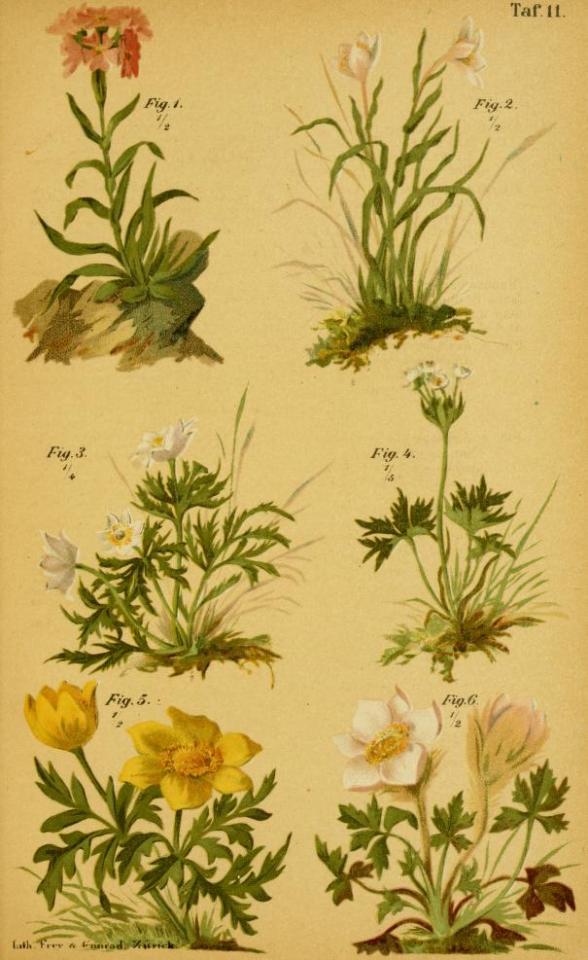
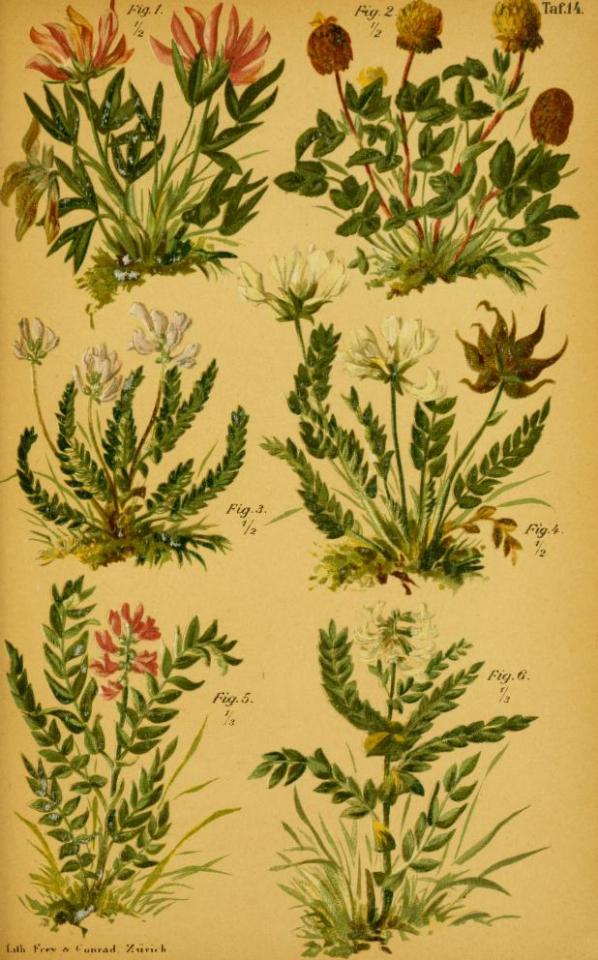


1) Primula and Androsace (Primrose, Auricula)
2) Alpenrosen (Rhododendron), Rosebay, Daphne, Heath, Red Bear-berry, Trailing Azalea
3) Pedicularis (Lousewort) and Linaria (Alpine Toadflax)
4) Arnica, Starwort, Edelweiss, Swiss Cudweed, Woolly Hawkweed, Skorpion Wort, Golden Hawk’s Beard, Musk Milfoil, Lucid Scabious, Black Milfoil
5) Hairy Groundsel, Carniol Groundsel, Leopard’s-bane Groundsel, Heart-leaved Groundsel, Alpine Ox-Eye
6) Red Alpine Catchfly, Mountain Lloydia, Alpine Anemone, Narcissus-flowered Anemone, Yellow Anemone, Spring Anemone
7) Alpine Trefoil, Brown Trefoil, Mountain Oxytropis, Yellowish Mountain Oxytropis, Alpine Saint-foin, Frigid Mountain Lentil
8) One-flowered Winter-green, Round-leaved Winter-green, Alpine Poppy, Rhaetic Poppy, European Sow-bread, Alpine Nigritella
9) Alpine Soldanella, Delicat Soldanella, Broad-leaved Alpine Chickweed, Cod-webbed House-leek, Two-flowered Violet, Alpine Bartsia, Long-spurred Violet, Mountain Avens
10) Dwarf Gentian, Carved Gentian, Bavarian Gentian, Short-leaved Gentian, Tender Gentian, Snow-Gentian, Spring-Gentian, German Gentian, Cilated Gentian
Illustrations of Alpine plants taken from ‘Taschenflora des Alpen-Wanderers’ by Ludwig Schröter, Carl Schröter. Published 1899 by A. Raustein.
New York Botanical Garden, LuEsther T. Mertz Library.
archive.org
102 notes
·
View notes
Text
9 Day Rwenzori Mountains Climbing

Program Highlights
Duration: 9 Days
Category: Uganda Trekking
Destinations: Rwenzori Mountain
Major Attractions:
Vegetation zones, wildlife and Rwenzori Mountain
Tour Guides Language:
English, Spanish, French, German, Italian
For other languages please send a special request prior to your safari -additional fee may apply.
Start in: Kasese
End in: Kampala/Entebbe
Recommended Packing list: Camera with enough zoom and memory space and extra batteries, binoculars, light clothes, safari boot, mosquito repellents, sunhat, sunglasses with UV radiation filtering etc.
Additional note:
Porters will escort and guide you all your climbing along the mountain
Itinerary Description
Day 0: Arrival, Tour Briefing and Resting
You will be picked up from the airport in Kasese ( Kasese Airport) and be transferred to the booked hotel in Kasese
Get the safari general briefing from the prepared safari consultant/guide
Dinner and overnight stay at your booked hotel in Kasese
Day 1: Depart from Kasese to Rwenzori Mountain
Depart for Kasese, having lunch in Fort portal before heading for Kasese
Final purchases of the fresh fruits and vegetables before dinner and overnight at Margherita Hotel
Meal Plan Lunch and dinner
Day 2: Transfer to Nyakalengija to Nyabitaba Hut
Morning after breakfast, transfer to Nyakalengija for weighing and porter allocation before starting the climb of about 5 hours to the first hut
Picnic lunches will be served this day before climbing through the moss to the Nyabitaba Hut(2650metres) for dinner and overnight stay
Day 3: Climb through Kurt Shafer Bridge to John Matte Hut
Start early after breakfast and climb through the Kurt Shafer Bridge that crosses the Mobuku River Confluence
This 5 hour hike takes you through the bamboo, Lobelia and heath finally ending at John Matte Hut (3350m)
Have dinner and overnight stay at John Matte Hut
Day 4: Climb from John Matte Hut to Bujuku Hut
The climb this day gets boggy as you hike through Giant heather, Lobelias and groundsel through the Cooking Pot to the overnight hut at Bujuku
The average hiking time for this section is 4.5 - 5 hours
Overnight stay at Bujuku Hut(3977)
Day 5: Climb from Bujuku Hut to Elena Hut
Breakfast at leisure and proceed on a muddy hike through steep cliffs
This is a section of Giant Groundsels and Lobelias that characterized the higher section of the Mountain
Ascend further to Elena Hut which acts as a base for the final assent of the highest peak of the Rwenzori Mountains
Meals and overnight at Elena Hut(4541m)
Day 6: Climb through Margherita to Kitandara Lakes
Rise up very early before sunrise and walk through the snow to Margherita peak (5109m)
If weather conditions are favorable, sunset would find you at the peak where you would take pictures
From here, descend to the Kitandara Lakes. Meals and overnight at the Kitandara Hut 4,023m
Day 7: Descend from Kitandara to Guy Yeoman Hut
The descent gets you through beautiful views of the Congo and the alpine moss
The trail then leads through the Bujongolo and Kabamba rock shelters
This trip takes an average of 6 hours to Guy Yeoman Hut, 3.261 m
Meals and overnight at Guy Yeoman Hut (3260m)
Day 8: Descend from Guy Yeoman Hut to Nyabitaba Hut
The descent of about 6 hours starts to Nyabitaba through the heather zone, Mobuku River and the Bamboo forest before heading to your final hut in the Mountains
Meals and overnight at Nyabitaba hut(2650m)
Day 9: Nyabitabu Hut and departure
The last 2 or 3 hours ends a morning descend to Nyakalengija trailhead (1600m)
Where you will wait for a safari vehicle which will transfer you to Kampala or to Entebbe for evening flight out
Read the full article
0 notes
Text
heath groundsel Deutsch heath groundsel Übersetzung
heath groundsel Deutsch Englisch heath groundsel auf Deutsch übersetzen heath groundsel übersetzung. heath groundsel Deutsch übersetzung
0 notes
Text
A Trip To Mount Elgon National Park
MOUNT ELGON
Mount Elgon National Park is the largest volcanic caldera on the planet Earth and is located in western Uganda straddling the Kenyan border. Mount Elgon was the tallest mountain in East Africa, today this inactive mountain is the fourth tallest in East Africa with 4,321 meters above sea level it boasts the largest base of any extinct volcano in the world, covers a total area of 1279 square kilometers, 69 of which are in Kenya. Mount Elgon was formed many years ago it was formed as a process of vulcanicity. The mountain is divided into four vegetation zones and each vegetation zone has its own attractions, very beautiful. You reach the mountain forest you hear the birds singing in the morning they wake you up. At mount Elgon there about 273 trees and shrub species namely; whistling thorn acacia, wait a bit thorn, grewia, giant cactus, African pencil cedar, spiny tree fern, broad leaved croton, flat top acacia, river acacia, red thorn acacia, black thorn acacia, white-galled acacia, umbrella acacia, red thorn acacia, large leaved albizia, red-hot poker tree(lucky bean tree, flame tree, casuarinas, sycamore fig, teclea, giant heath, large leaved gardenia, gardenia, giant groundsel, giant lobelia, sausage tree, jacaranda, African wild date palm and many others so the eco system is very, very rich.
The major issues affecting Mount Elgon National Park stem from the population pressure, the population density around Mount Elgon is about 600 people per square kilometer and the population is highly dependent on land. So you find that the landholdings per person is very small, so the population look at Mount Elgon National Park as alternative land that can be availed for farming. And therefore the park has a big problem of encroachment, communities because of land shortage have invaded the national park, cut down the trees and they have established plantations of bananas, cassava maize and many other food crops.
Mount Elgon is a rain forested park and has got very good trees.
Flora and Fauna
Mount Elgon vegetation zones are similar to those of other large East African mountains. The contour of the mountain supports a contagious belt of ever green forest extending over roughly 750 km2 with in Uganda. The forest belt is divided into two broad strata. A tall Afro montane forest below 2500m, low canopy montane and bamboo between 2500m to 3000m the slopes below the 2000 contour.
The most common species visible to hikers are blue monkey and white and black colobus. A small number of elephants are residents in the forest, animals like Zebras, Buffalos, sitatunga and common duiker(antelopes) and lions. The bird checklist stands at more than 300 species like mustached green thinker bird, red throated, wryneck, hunter’s cisticola, alpine chat, marsh widow bird, weyn’s weaver.
To Things to Do and See around Mount Elgon and Sipi falls.
Rock Climbing:
Rock climbing takes place outside the park at Sipi falls. There are 14 climbs requiring various levels of rock scaling techniques, the toughest is a 35m climb while the easiest is 15m. This is guided and supervised activity that is the most enjoyable adventure.
Birding:
Since a high proportion of the 300 species is highly rewarding for birders. The lovely bronze mannkin, African cuckoo, black and white casqued hornbill, montane oriole, mountain greenbul, golden winged sunbird, greater honeyguide, taita fscal, barn swallow, red rumped swallow, hunters cisticola and black collared apalis.
Birding at Mount Elgon is remarkable to visitors with a variety of colorful birds and by their relative tameness
Sipi falls:
This pretty waterfall is visible for miles as it plunges over a cliff from the direction of bulago village. Tourists focus on the trading centre which lies at an altitude of 1,775monly 40km from Mbale along a good surfaced road.
The Abayudaya Jews of Uganda:
The isolated community of the Ugandan Jews known as the Abayudaya. The most prominent of these religious dissident was Malaki Musajakawa whose Aficanist Christian sect called Malakities managed to attract up to 100,000 ugandans away from more convectional denominations during its short lived heydays.
Bagisu Circumcision rights:
The bantu speaking people who live on the slopes of Mount Elgon. Circumcision of the bagisu takes place in August and December , a man can not married without being circumcised. Travelers who visit Mbale, the Sipi and Kapchorwa during the circumcision are welcome to attend any local ceremonies that take place. Females also come looking at the newly bachelors.
Wanale cliffs:
The waterfall streaked cliffs of wanale ridges dominate Mbale’s eastern skyline, making the end of the 2,348m Nkokonjeru arm a ridge of lava extruded through a parasitic vent on the western flank of Mount Elgon. A 20 km road from Mbale climbs up on the ridge through a cleft in the cliffs, meandering through superb mountain scenery.
Fishing:
A stretch of the sipi river above the top of the waterfall near Kapkwai about 20 minutes drive from the Sipi trading centre trout fishing is practiced. the Nile Perch and the cat fish are among the more alluring fish that inhabit sipi river.
The Nyero Rock Painting:
The finest of several rock art sites scattered around eastern Uganda. The site comprises six discrete painted panels set within a few hundred meters of each prominent granite outcrop called Moru Ikara. The age of the rock is a matter for conjecture, as is the identity of the artist, the Iteso people who have inhabited the region for the last 300 years reckon that the art has always been there.
Where To Stay
Upmarket
Sipi River Lodge
Set with I the grounds of a unique restored former residence, sipi river lodge consists of main house and seven detached accommodation for the guest. Set I lovely wooded grounds at the foot of the middle waterfall the terrific little lodge is comfortably the best in the Mount Elgon region. The main lodge occupies a transformed bungalow with a cosy lounge, bar and excellent library. Activities include sipi walks, mountain biking, coffee tours, archery ascents of Mount Elgon and fly fishing in the river.
The Sipi Falls region is a hiker’s paradise! Choose from among a series of popular waterfall walks or talk to our guides about custom options to craft the ultimate scenic
Moderate
Lacam Lodge
It’s built on the slopes of mountain Elgon in Eastern Uganda. Enjoy a place of sublime natural beauty and rustic charm. Staying amongst the friendly Sabine people, Perched on the cliff edge with unparalleled views of Sipi falls. So close to that the waterfall is mostly heard than seen. Though the steep cliff below the site will give visitors the willies, the sudden drop makes the view down sipi valley to the Kyoga Basin particularly dramatic
Services
Accommodation
Restaurant and Bar
Adventure
Relaxation
A place for relaxation or adventure
Stay in one of our wooden bandas or in your tent.
Enjoy a four course candle-lit dinner.
Go hiking, abseiling and rock climbing
Accommodation is provided in;
Wooden Bandas
Made of local Timber
Grass thatch is extracted from the plains below.
2 double beds in each Banda
Spacious Verandahs
En suite shower and toilet
Lacam Lodge also has 3 non self-contained Bandas with shared facilities and are cheaper than the self-contained. The lodge allows self-camping where the guests are allowed to pitch their tents. Lacam Lodge also features a restaurant and bar.
Budget
Noah’s Ark Resort
Noah’s Ark Hotels located on the Mount Elgon Slopes present all category accommodation ranging from Luxury to Midrange and Budget accommodation the Uganda safari undertakers. The Hotel features three branches with the capacity to take more than 100 clients with the price range of $10 – $100 depending on the client’s preference.
Noah’s Ark Hotels offers mid range accommodation to travelers and is situated along the slopes of Mt. Elgon and this varies from luxury-midrange as well as budget depending on how much one has prepared to spend. The hotel has three different divisions and these have the capability to accommodate more than 100 clients from different destinations and fall into the price range of $10 – $100.
The Main Hotel includes;
Bedroom with Living Room
DSTV
Living room
Bath
Single Bed
Television
Bed
Bathroom
Twin Bedroom
Bathroom
2 beds
DSTV
0 notes
Text
Winter in San Francisco
To anyone who has not been in San Francisco in the winter it will be hard to believe these are winter photos, taken in the past couple of years in The San Francisco Botanical Garden during the month of January.
So, this is winter in San Francisco !
I know; it’s a delight.
Garden visitors photographing Christmas Heather (Erica) in winter
San Francisco is a very mild, summer-dry, winter-wet climate, where it almost never freezes and gardens are growing 12 month of the year. The Botanical Garden is a showcase of plants from similar summer-dry (sometimes called mediterranean) climates but because it is so temperate, many plants from many parts of the world thrive.
Telanthophora grandifolia – Giant Groundsel, in Mesoamerican Cloud Forest
In fact the Magnolias, one of the signature collections of the Garden, are not native to summer-dry climates at all and are a highlight of winter. These big deciduous trees begin their blooming and late December and go into late March.
Magnolia sargentiana, (Sargent’s magnolia) flowering deciduous tree
I wrote about the magnolias last January, if you want to see other photos.
Magnolia soulangeana flower unfolding in San Francisco Botanical Garden.
The trees are quite large and it’s quite a challenge to photograph them. At the same time, because they are so large, you can walk under and look up.
Dawson’s magnolia (Magnolia dawsoniana), deciduous tree, silhouette
And in winter, you may even find a bird nest exposed.
Where the trees have sweeping branches low enough to photograph and see closely, I find myself mesmerized by their simple structure.
Magnolia doltsopa, aka Michelia doltsopa, Sweet Michelia
One of my favorite parts of the garden, in any season, is the South African collection. The southern Cape of South Africa is another summer-dry climate and there are many wonderful plants that do quite well in California, and are quite showy in winter.
The collection is quite mature in this part of the garden, showcasing a wonderful shrub border with Erica, Podocarpus, Aloes, and Leucadendrons.
Flowering winter shrub border, San Francisco Botanical Garden
Detail of the Erica canaliculata, known variously as Christmas Heather, Scotch Heather, or Pink Heath.
Pale pink flowers of Erica canaliculata,winter blooming flowering shrub
Leucadendrons, Cone-bush, are one of the most showy shrubs, and the bright involucral leaves at the tips of flowering branches are particularly showy in winter.
Leucadendron conebush flowering in San Francisco Botanical Garden
They are in the Protea family and have become quite popular in floral arrangements.
Leucadendron conebush flowering in San Francisco Botanical Garden
Many other wonderful South American plants are featured in this part of the garden. Featherhead, Phylica pubescens, is a photographer’s delight.
Phylica pubescens – Featherhead Bush, leafy ‘feather duster’ stems
I am particularly fond of grasses and in recent years Restio’s, a large grasslike group of plants from South Africa, have become increasingly popular the West Coast gardens.
Thamnochortus insignis, South African Thatching Reed
As any of you who have been following Debra Lee Baldwin, the Succulent Queen, my fellow co-blogger here at Gardening Gone Wild, you know succulent gardens are photogenic almost any time of year. And when the Aloes flower in winter – Yowza!
Aloe arborescens, Candelabra or Krantz Aloe, red flowering succulent.
I love the way the red flowering aloe provide touches of color when photographing other sections of the the botanic garden’s Succulent Garden, as you can see behind these magnificent Agave americana.
Agave, Century Plant; silver succulent in San Francisco Botanical Garden
Much of the country is in the midst of a brutal snowy winter. Here in this winter wet climate we’re finally been having glorious rains, and in San Francisco, gardens are lookin’ good.
from Gardening Gone Wild http://gardeninggonewild.com/?p=31083
0 notes
Photo

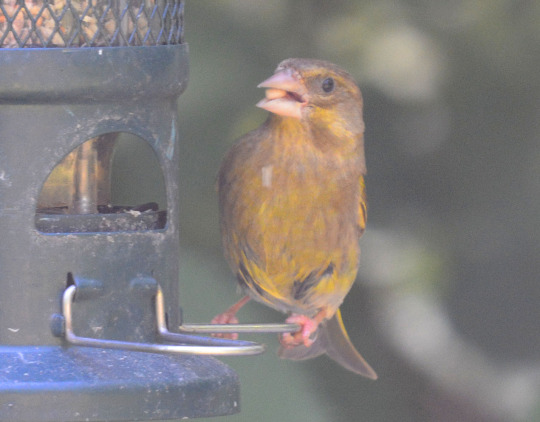
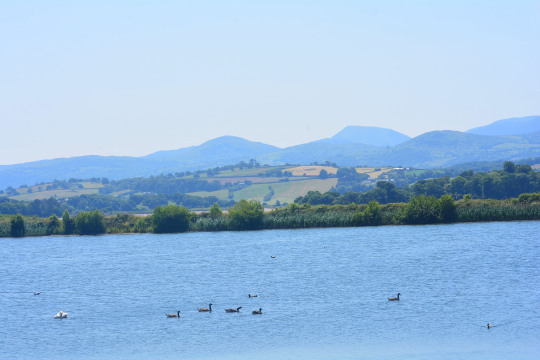
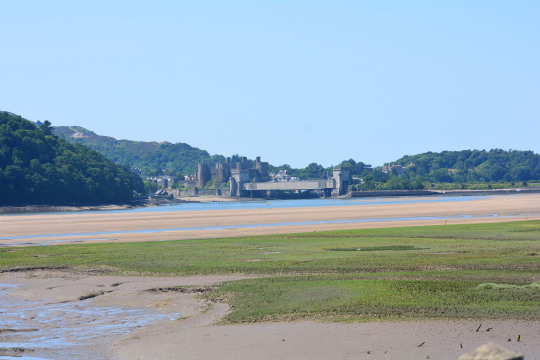

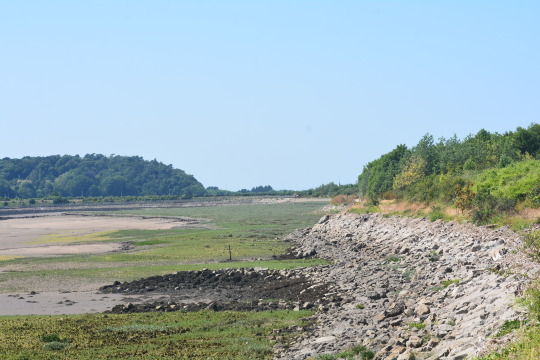


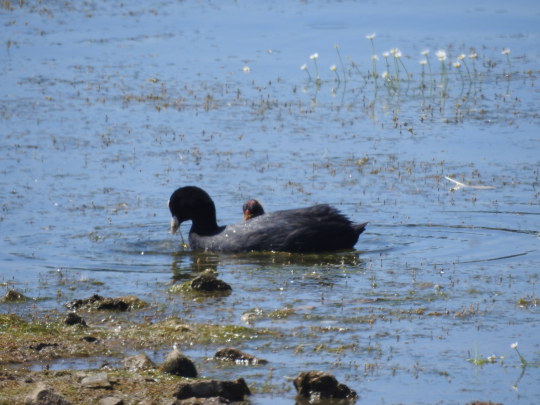
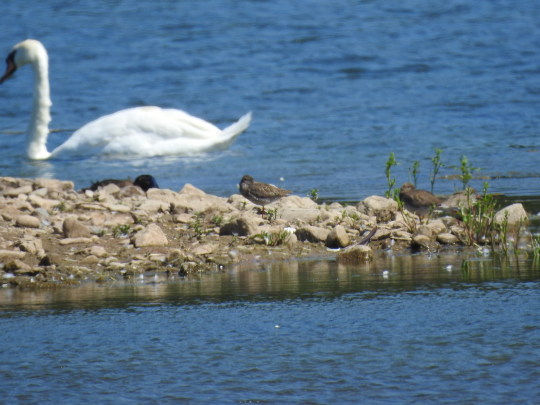
14/06/23-RSPB Conwy
Pictures in this set are of: 1. Bee orchid, we had heard they may be here at this time and it really delivered with perhaps more than I’d ever seen at once before. There were so many of these exquisite, intricately marked and stunning flowers around. It was a pleasure to see them and take them in, my first of the year and interestingly the first I’ve ever seen outside of my local Lakeside Country Park where I’ve loved these flowers coming into my life the last three years. Another top flower moment this holiday. 2. Greenfinch. 3-7. Beautiful vast views at this lovely place which I was really impressed with, including the beautiful Conwy Castle. 8. Red valerian. 9. Coot and chick it was good to see a few of their chicks. 10. Redshanks, a nice wader to see here today, with a Mute Swan behind.
Here I was also over the moon to see my first Little Ringed Plover of the year briefly flying over taking my year list to 206, level with last year’s total to make it my joint highest ever year list. It’s so thrilling and I am amazed to make it here so early in a year, what a year I’m having with so much seen. Buzzard, Shelduck, Great Crested Grebe, Little Egret, Gadwall, Cormorant, Curlew, Lapwing, Moorhen with chicks too, Linnet, Swift, Swallow and House Martin were other highlights. As well as Red Admiral, Small Tortoiseshell and Broad-bodied Chaser and I was very happy to see my first Southern Hawker of the year too a female. I was also happy to see my pyramidal orchid, self-heal, agrimony and yarrow of the year in a flower fest. Other key flowers seen were heath spotted orchid, mallow, oxeye daisy, a variety of crane’s-bills including broad-leaved and meadow, dotted/spotted loosestrife, herb-Robert, yellow iris, groundsel and beautiful viper’s-bugloss.
#photography#little ringed plover#bee orchid#pyramidal orchid#happy#rspb conwy#conwy#conwy castle#north wales#wales#uk#europe#outdoors#nature#wildlife#wildlife photography#flowers#birds#coot#chicks#cormorant#greenfinch#curlew#house martin#walk#walking
1 note
·
View note
Text
9 Day Rwenzori Mountains Climbing
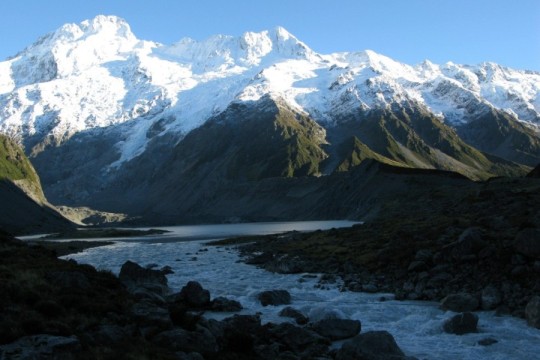
Program Highlights
Duration: 9 Days
Category: Uganda Trekking
Destinations: Rwenzori Mountain
Major Attractions:
Vegetation zones, wildlife and Rwenzori Mountain
Tour Guides Language:
English, Spanish, French, German, Italian
For other languages please send a special request prior to your safari -additional fee may apply.
Start in: Kasese
End in: Kampala/Entebbe
Recommended Packing list: Camera with enough zoom and memory space and extra batteries, binoculars, light clothes, safari boot, mosquito repellents, sunhat, sunglasses with UV radiation filtering etc.
Additional note:
Porters will escort and guide you all your climbing along the mountain
Itinerary Description
Day 0: Arrival, Tour Briefing and Resting
You will be picked up from the airport in Kasese ( Kasese Airport) and be transferred to the booked hotel in Kasese
Get the safari general briefing from the prepared safari consultant/guide
Dinner and overnight stay at your booked hotel in Kasese
Day 1: Depart from Kasese to Rwenzori Mountain
Depart for Kasese, having lunch in Fort portal before heading for Kasese
Final purchases of the fresh fruits and vegetables before dinner and overnight at Margherita Hotel
Meal Plan Lunch and dinner
Day 2: Transfer to Nyakalengija to Nyabitaba Hut
Morning after breakfast, transfer to Nyakalengija for weighing and porter allocation before starting the climb of about 5 hours to the first hut
Picnic lunches will be served this day before climbing through the moss to the Nyabitaba Hut(2650metres) for dinner and overnight stay
Day 3: Climb through Kurt Shafer Bridge to John Matte Hut
Start early after breakfast and climb through the Kurt Shafer Bridge that crosses the Mobuku River Confluence
This 5 hour hike takes you through the bamboo, Lobelia and heath finally ending at John Matte Hut (3350m)
Have dinner and overnight stay at John Matte Hut
Day 4: Climb from John Matte Hut to Bujuku Hut
The climb this day gets boggy as you hike through Giant heather, Lobelias and groundsel through the Cooking Pot to the overnight hut at Bujuku
The average hiking time for this section is 4.5 - 5 hours
Overnight stay at Bujuku Hut(3977)
Day 5: Climb from Bujuku Hut to Elena Hut
Breakfast at leisure and proceed on a muddy hike through steep cliffs
This is a section of Giant Groundsels and Lobelias that characterized the higher section of the Mountain
Ascend further to Elena Hut which acts as a base for the final assent of the highest peak of the Rwenzori Mountains
Meals and overnight at Elena Hut(4541m)
Day 6: Climb through Margherita to Kitandara Lakes
Rise up very early before sunrise and walk through the snow to Margherita peak (5109m)
If weather conditions are favorable, sunset would find you at the peak where you would take pictures
From here, descend to the Kitandara Lakes. Meals and overnight at the Kitandara Hut 4,023m
Day 7: Descend from Kitandara to Guy Yeoman Hut
The descent gets you through beautiful views of the Congo and the alpine moss
The trail then leads through the Bujongolo and Kabamba rock shelters
This trip takes an average of 6 hours to Guy Yeoman Hut, 3.261 m
Meals and overnight at Guy Yeoman Hut (3260m)
Day 8: Descend from Guy Yeoman Hut to Nyabitaba Hut
The descent of about 6 hours starts to Nyabitaba through the heather zone, Mobuku River and the Bamboo forest before heading to your final hut in the Mountains
Meals and overnight at Nyabitaba hut(2650m)
Day 9: Nyabitabu Hut and departure
The last 2 or 3 hours ends a morning descend to Nyakalengija trailhead (1600m)
Where you will wait for a safari vehicle which will transfer you to Kampala or to Entebbe for evening flight out
Read the full article
0 notes
Text
9 Day Rwenzori Mountains Climbing
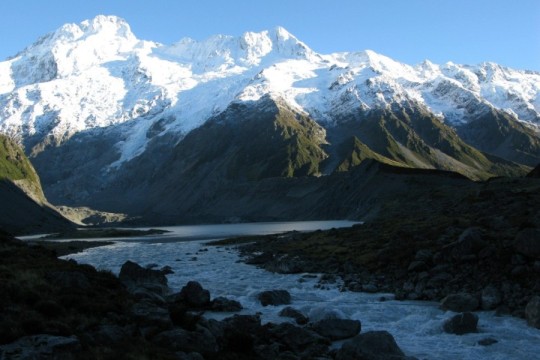
Program Highlights
Duration: 9 Days
Category: Uganda Trekking
Destinations: Rwenzori Mountain
Major Attractions:
Vegetation zones, wildlife and Rwenzori Mountain
Tour Guides Language:
English, Spanish, French, German, Italian
For other languages please send a special request prior to your safari -additional fee may apply.
Start in: Kasese
End in: Kampala/Entebbe
Recommended Packing list: Camera with enough zoom and memory space and extra batteries, binoculars, light clothes, safari boot, mosquito repellents, sunhat, sunglasses with UV radiation filtering etc.
Additional note:
Porters will escort and guide you all your climbing along the mountain
Itinerary Description
Day 0: Arrival, Tour Briefing and Resting
You will be picked up from the airport in Kasese ( Kasese Airport) and be transferred to the booked hotel in Kasese
Get the safari general briefing from the prepared safari consultant/guide
Dinner and overnight stay at your booked hotel in Kasese
Day 1: Depart from Kasese to Rwenzori Mountain
Depart for Kasese, having lunch in Fort portal before heading for Kasese
Final purchases of the fresh fruits and vegetables before dinner and overnight at Margherita Hotel
Meal Plan Lunch and dinner
Day 2: Transfer to Nyakalengija to Nyabitaba Hut
Morning after breakfast, transfer to Nyakalengija for weighing and porter allocation before starting the climb of about 5 hours to the first hut
Picnic lunches will be served this day before climbing through the moss to the Nyabitaba Hut(2650metres) for dinner and overnight stay
Day 3: Climb through Kurt Shafer Bridge to John Matte Hut
Start early after breakfast and climb through the Kurt Shafer Bridge that crosses the Mobuku River Confluence
This 5 hour hike takes you through the bamboo, Lobelia and heath finally ending at John Matte Hut (3350m)
Have dinner and overnight stay at John Matte Hut
Day 4: Climb from John Matte Hut to Bujuku Hut
The climb this day gets boggy as you hike through Giant heather, Lobelias and groundsel through the Cooking Pot to the overnight hut at Bujuku
The average hiking time for this section is 4.5 - 5 hours
Overnight stay at Bujuku Hut(3977)
Day 5: Climb from Bujuku Hut to Elena Hut
Breakfast at leisure and proceed on a muddy hike through steep cliffs
This is a section of Giant Groundsels and Lobelias that characterized the higher section of the Mountain
Ascend further to Elena Hut which acts as a base for the final assent of the highest peak of the Rwenzori Mountains
Meals and overnight at Elena Hut(4541m)
Day 6: Climb through Margherita to Kitandara Lakes
Rise up very early before sunrise and walk through the snow to Margherita peak (5109m)
If weather conditions are favorable, sunset would find you at the peak where you would take pictures
From here, descend to the Kitandara Lakes. Meals and overnight at the Kitandara Hut 4,023m
Day 7: Descend from Kitandara to Guy Yeoman Hut
The descent gets you through beautiful views of the Congo and the alpine moss
The trail then leads through the Bujongolo and Kabamba rock shelters
This trip takes an average of 6 hours to Guy Yeoman Hut, 3.261 m
Meals and overnight at Guy Yeoman Hut (3260m)
Day 8: Descend from Guy Yeoman Hut to Nyabitaba Hut
The descent of about 6 hours starts to Nyabitaba through the heather zone, Mobuku River and the Bamboo forest before heading to your final hut in the Mountains
Meals and overnight at Nyabitaba hut(2650m)
Day 9: Nyabitabu Hut and departure
The last 2 or 3 hours ends a morning descend to Nyakalengija trailhead (1600m)
Where you will wait for a safari vehicle which will transfer you to Kampala or to Entebbe for evening flight out
Read the full article
0 notes
Text
9 Day Rwenzori Mountains Climbing

Program Highlights
Duration: 9 Days
Category: Uganda Trekking
Destinations: Rwenzori Mountain
Major Attractions:
Vegetation zones, wildlife and Rwenzori Mountain
Tour Guides Language:
English, Spanish, French, German, Italian
For other languages please send a special request prior to your safari -additional fee may apply.
Start in: Kasese
End in: Kampala/Entebbe
Recommended Packing list: Camera with enough zoom and memory space and extra batteries, binoculars, light clothes, safari boot, mosquito repellents, sunhat, sunglasses with UV radiation filtering etc.
Additional note:
Porters will escort and guide you all your climbing along the mountain
Itinerary Description
Day 0: Arrival, Tour Briefing and Resting
You will be picked up from the airport in Kasese ( Kasese Airport) and be transferred to the booked hotel in Kasese
Get the safari general briefing from the prepared safari consultant/guide
Dinner and overnight stay at your booked hotel in Kasese
Day 1: Depart from Kasese to Rwenzori Mountain
Depart for Kasese, having lunch in Fort portal before heading for Kasese
Final purchases of the fresh fruits and vegetables before dinner and overnight at Margherita Hotel
Meal Plan Lunch and dinner
Day 2: Transfer to Nyakalengija to Nyabitaba Hut
Morning after breakfast, transfer to Nyakalengija for weighing and porter allocation before starting the climb of about 5 hours to the first hut
Picnic lunches will be served this day before climbing through the moss to the Nyabitaba Hut(2650metres) for dinner and overnight stay
Day 3: Climb through Kurt Shafer Bridge to John Matte Hut
Start early after breakfast and climb through the Kurt Shafer Bridge that crosses the Mobuku River Confluence
This 5 hour hike takes you through the bamboo, Lobelia and heath finally ending at John Matte Hut (3350m)
Have dinner and overnight stay at John Matte Hut
Day 4: Climb from John Matte Hut to Bujuku Hut
The climb this day gets boggy as you hike through Giant heather, Lobelias and groundsel through the Cooking Pot to the overnight hut at Bujuku
The average hiking time for this section is 4.5 - 5 hours
Overnight stay at Bujuku Hut(3977)
Day 5: Climb from Bujuku Hut to Elena Hut
Breakfast at leisure and proceed on a muddy hike through steep cliffs
This is a section of Giant Groundsels and Lobelias that characterized the higher section of the Mountain
Ascend further to Elena Hut which acts as a base for the final assent of the highest peak of the Rwenzori Mountains
Meals and overnight at Elena Hut(4541m)
Day 6: Climb through Margherita to Kitandara Lakes
Rise up very early before sunrise and walk through the snow to Margherita peak (5109m)
If weather conditions are favorable, sunset would find you at the peak where you would take pictures
From here, descend to the Kitandara Lakes. Meals and overnight at the Kitandara Hut 4,023m
Day 7: Descend from Kitandara to Guy Yeoman Hut
The descent gets you through beautiful views of the Congo and the alpine moss
The trail then leads through the Bujongolo and Kabamba rock shelters
This trip takes an average of 6 hours to Guy Yeoman Hut, 3.261 m
Meals and overnight at Guy Yeoman Hut (3260m)
Day 8: Descend from Guy Yeoman Hut to Nyabitaba Hut
The descent of about 6 hours starts to Nyabitaba through the heather zone, Mobuku River and the Bamboo forest before heading to your final hut in the Mountains
Meals and overnight at Nyabitaba hut(2650m)
Day 9: Nyabitabu Hut and departure
The last 2 or 3 hours ends a morning descend to Nyakalengija trailhead (1600m)
Where you will wait for a safari vehicle which will transfer you to Kampala or to Entebbe for evening flight out
Read the full article
0 notes
Text
9 Day Rwenzori Mountains Climbing
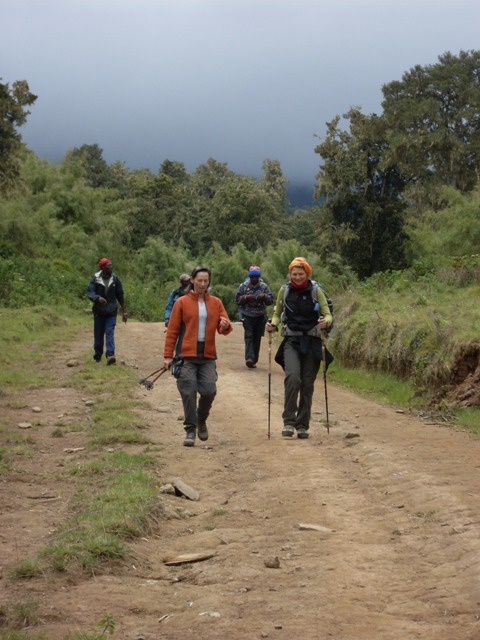
Program Highlights
Duration: 9 Days
Category: Uganda Trekking
Destinations: Rwenzori Mountain
Major Attractions:
Vegetation zones, wildlife and Rwenzori Mountain
Tour Guides Language:
English, Spanish, French, German, Italian
For other languages please send a special request prior to your safari -additional fee may apply.
Start in: Kasese
End in: Kampala/Entebbe
Recommended Packing list: Camera with enough zoom and memory space and extra batteries, binoculars, light clothes, safari boot, mosquito repellents, sunhat, sunglasses with UV radiation filtering etc.
Additional note:
Porters will escort and guide you all your climbing along the mountain
Itinerary Description
Day 0: Arrival, Tour Briefing and Resting
You will be picked up from the airport in Kasese ( Kasese Airport) and be transferred to the booked hotel in Kasese
Get the safari general briefing from the prepared safari consultant/guide
Dinner and overnight stay at your booked hotel in Kasese
Day 1: Depart from Kasese to Rwenzori Mountain
Depart for Kasese, having lunch in Fort portal before heading for Kasese
Final purchases of the fresh fruits and vegetables before dinner and overnight at Margherita Hotel
Meal Plan Lunch and dinner
Day 2: Transfer to Nyakalengija to Nyabitaba Hut
Morning after breakfast, transfer to Nyakalengija for weighing and porter allocation before starting the climb of about 5 hours to the first hut
Picnic lunches will be served this day before climbing through the moss to the Nyabitaba Hut(2650metres) for dinner and overnight stay
Day 3: Climb through Kurt Shafer Bridge to John Matte Hut
Start early after breakfast and climb through the Kurt Shafer Bridge that crosses the Mobuku River Confluence
This 5 hour hike takes you through the bamboo, Lobelia and heath finally ending at John Matte Hut (3350m)
Have dinner and overnight stay at John Matte Hut
Day 4: Climb from John Matte Hut to Bujuku Hut
The climb this day gets boggy as you hike through Giant heather, Lobelias and groundsel through the Cooking Pot to the overnight hut at Bujuku
The average hiking time for this section is 4.5 - 5 hours
Overnight stay at Bujuku Hut(3977)
Day 5: Climb from Bujuku Hut to Elena Hut
Breakfast at leisure and proceed on a muddy hike through steep cliffs
This is a section of Giant Groundsels and Lobelias that characterized the higher section of the Mountain
Ascend further to Elena Hut which acts as a base for the final assent of the highest peak of the Rwenzori Mountains
Meals and overnight at Elena Hut(4541m)
Day 6: Climb through Margherita to Kitandara Lakes
Rise up very early before sunrise and walk through the snow to Margherita peak (5109m)
If weather conditions are favorable, sunset would find you at the peak where you would take pictures
From here, descend to the Kitandara Lakes. Meals and overnight at the Kitandara Hut 4,023m
Day 7: Descend from Kitandara to Guy Yeoman Hut
The descent gets you through beautiful views of the Congo and the alpine moss
The trail then leads through the Bujongolo and Kabamba rock shelters
This trip takes an average of 6 hours to Guy Yeoman Hut, 3.261 m
Meals and overnight at Guy Yeoman Hut (3260m)
Day 8: Descend from Guy Yeoman Hut to Nyabitaba Hut
The descent of about 6 hours starts to Nyabitaba through the heather zone, Mobuku River and the Bamboo forest before heading to your final hut in the Mountains
Meals and overnight at Nyabitaba hut(2650m)
Day 9: Nyabitabu Hut and departure
The last 2 or 3 hours ends a morning descend to Nyakalengija trailhead (1600m)
Where you will wait for a safari vehicle which will transfer you to Kampala or to Entebbe for evening flight out
Read the full article
0 notes
Text
9 Day Rwenzori Mountains Climbing
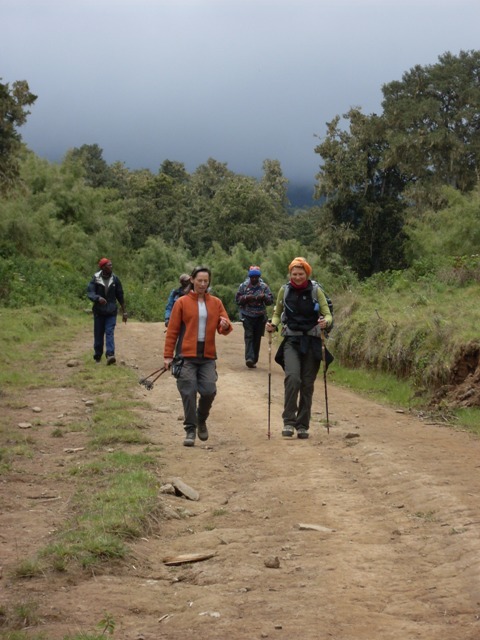
Program Highlights
Duration: 9 Days
Category: Uganda Trekking
Destinations: Rwenzori Mountain
Major Attractions: Vegetation zones, wildlife and Rwenzori Mountain
Tour Guides Language:
English, Spanish, French, German, Italian
For other languages please send a special request prior to your safari -additional fee may apply.
Start in: Kasese
End in: Kampala/Entebbe
Recommended Packing list: Camera with enough zoom and memory space and extra batteries, binoculars, light clothes, safari boot, mosquito repellents, sunhat, sunglasses with UV radiation filtering etc.
Additional note:
Porters will escort and guide you all your climbing along the mountain
Itinerary Description
Day 0: Arrival, Tour Briefing and Resting
You will be picked up from the airport in Kasese ( Kasese Airport) and be transferred to the booked hotel in Kasese
Get the safari general briefing from the prepared safari consultant/guide
Dinner and overnight stay at your booked hotel in Kasese
Day 1: Depart from Kasese to Rwenzori Mountain
Depart for Kasese, having lunch in Fort portal before heading for Kasese
Final purchases of the fresh fruits and vegetables before dinner and overnight at Margherita Hotel
Meal Plan Lunch and dinner
Day 2: Transfer to Nyakalengija to Nyabitaba Hut
Morning after breakfast, transfer to Nyakalengija for weighing and porter allocation before starting the climb of about 5 hours to the first hut
Picnic lunches will be served this day before climbing through the moss to the Nyabitaba Hut(2650metres) for dinner and overnight stay
Day 3: Climb through Kurt Shafer Bridge to John Matte Hut
Start early after breakfast and climb through the Kurt Shafer Bridge that crosses the Mobuku River Confluence
This 5 hour hike takes you through the bamboo, Lobelia and heath finally ending at John Matte Hut (3350m)
Have dinner and overnight stay at John Matte Hut
Day 4: Climb from John Matte Hut to Bujuku Hut
The climb this day gets boggy as you hike through Giant heather, Lobelias and groundsel through the Cooking Pot to the overnight hut at Bujuku
The average hiking time for this section is 4.5 - 5 hours
Overnight stay at Bujuku Hut(3977)
Day 5: Climb from Bujuku Hut to Elena Hut
Breakfast at leisure and proceed on a muddy hike through steep cliffs
This is a section of Giant Groundsels and Lobelias that characterized the higher section of the Mountain
Ascend further to Elena Hut which acts as a base for the final assent of the highest peak of the Rwenzori Mountains
Meals and overnight at Elena Hut(4541m)
Day 6: Climb through Margherita to Kitandara Lakes
Rise up very early before sunrise and walk through the snow to Margherita peak (5109m)
If weather conditions are favorable, sunset would find you at the peak where you would take pictures
From here, descend to the Kitandara Lakes. Meals and overnight at the Kitandara Hut 4,023m
Day 7: Descend from Kitandara to Guy Yeoman Hut
The descent gets you through beautiful views of the Congo and the alpine moss
The trail then leads through the Bujongolo and Kabamba rock shelters
This trip takes an average of 6 hours to Guy Yeoman Hut, 3.261 m
Meals and overnight at Guy Yeoman Hut (3260m)
Day 8: Descend from Guy Yeoman Hut to Nyabitaba Hut
The descent of about 6 hours starts to Nyabitaba through the heather zone, Mobuku River and the Bamboo forest before heading to your final hut in the Mountains
Meals and overnight at Nyabitaba hut(2650m)
Day 9: Nyabitabu Hut and departure
The last 2 or 3 hours ends a morning descend to Nyakalengija trailhead (1600m)
Where you will wait for a safari vehicle which will transfer you to Kampala or to Entebbe for evening flight out
Read the full article
0 notes
